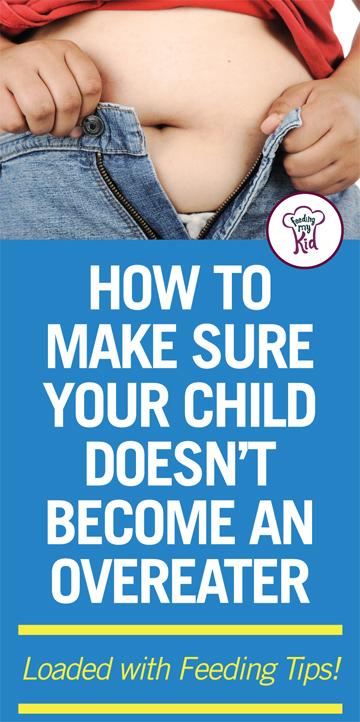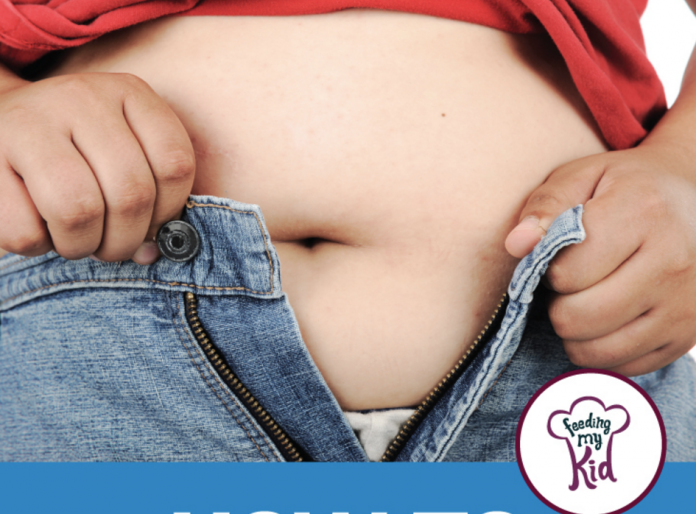 In the blink of an eye, your scrawny little boy has become an overweight teenage.
In the blink of an eye, your scrawny little boy has become an overweight teenage.
In this article, we are going to over how to help children learn how to listen to their own body cues for hunger and fullness and how to learn not to overeat.
We don’t always realize that some of our well-intentioned parenting can cause some unintended consequences.
When kids are young we sometimes turn to bribing, punishing or pleading to get our child to eat. Otherwise, they might starve!
Right now, you’re probably thinking, “I just want my kid to eat something!”. I can’t think about what happens to them 10 years from now.
I realized there is so much more to feeding children than just giving them food. I realized the importance of helping children develop lifelong relationships with food, and many of our habits are learned in infancy through the preschool years.
As an adult, do you still eat everything off your plate? Well, turns out, that habit is learned in childhood. Do you eat your feelings? That’s also learned in childhood. Are you a picky eater? Learned in childhood, too.
Why It’s Important You Act now
One-in-three kids are overweight or obese. Kids are not eating enough vegetables and fruits. Nine in 10 kids are not meeting the recommended daily intake of vegetables. Kids just aren’t eating healthy enough often enough. Almost 70% of adults are overweight or obese and the statistics just keep increasing.
Children can eat healthier; if we as parents become more aware of what we are feeding them and why. If we become mindful of portion size, empty calories and snacking.
Most of our chronic diseases are food related such as obesity, diabetes, cardiovascular disease, cancer, dental disease, and osteoporosis. And these can be prevented if we develop healthier eating habits early on.
We Want Only The Best For Our Children!
Sometimes in our efforts, we inadvertently send the wrong message to our children about how much he or she should be eating.
It’s so hard to not encourage a child to eat!
We know how important nutrition is for their growing bodies, so we encourage our children to eat everything off their plate or to take another bite of broccoli and you can get a cookie. We turn to almost any tactic to get our kids to eat another pea or piece of broccoli.
This is so hard!
We want to be more mindful of our parenting when it comes to how we talk about food, how we pressure our kids to eat, etc.
Avoid Using these External Motivators:
- Cajoling– here comes the choo, choo.
- Reasoning- do you want to grow big and strong like Uncle Bill?
- Incentivizing– if you eat your broccoli then you can get a new toy or sticker.
- Comparison- your little sister eats all of her green beans.
- The authoritarian approach- Because I SAID SO!!!
- Negotiating– have a few more bites and you can watch TV or have ice cream.
- Pleading- try another piece of chicken, please.
Teaching Children to Listen to Their Body
By three years old, children need to have learned how to listen to their own physical cues about being hungry, full or being too full. Even if your child is older than three, you can still teach them how to listen to their body by helping to explain this process to them.
You can teach your child how to read his or her own body cues for fullness and hunger. This is the first step to help your child avoid learning how to overeat.
You can stop it before it even starts.
How to Teach Kids to Listen to Their Bodies
It’s important to talk with your kids about the different types of hunger, fullness, and overeating. It’s important to go into detail about how each one feels. This helps kids understand how the body works, from chewing to swallowing and digesting.
Depending on how young your child is, you may want to create puppets to help illustrate each feeling from hungry to full to overeating full. This might help your child understand this complex idea of hungry, full and overeating.
Learning through play is one of the most powerful ways to help children learn.
Try to repeat this lesson as your child experiences different points of hunger and fullness throughout the day to help illustrate your point.
Researchers have found that by doing this at least once a week for 4 weeks, 70% of the children in the study were better able to self-regulate their eating.
Kids who are allowed to feel hungry can better distinguish between what it physically feels like to feel hungry and what emotional hunger feels like, such as boredom.
Yes, kids eat because they are bored, even at an early age. And sometimes we even give them extra snacks because we need 15 minutes of peace. Don’t beat yourself up if you’ve used food as a way to pass the time. Some days are about survivial.
How Do I Get My Kids To Listen To Their Tummy?
Don’t get me wrong. There are times your little on is going to confuse his or her hunger/fullness communications with you. He may tell you he is too full for dinner, but then later be hungry for dessert. There are times your child is going to get it wrong and have to deal with the natural consequence of getting it wrong. If your tot says he’s full and then does not eat, he will have to deal with the natural consequence of being hungry. Generally, kids are around three years old when they can truly grasp the idea of natural consequences.
If your child chooses to miss the meal then he will have to wait until the next snack time or mealtime. This helps him understand what hunger feels like and then the next time he eats, he will better understand what fullness feels like.
We have to let our kids experience this lesson while you talk them through it and help them understand what is going on.
This is similar to potty training. I’m sure you are wondering how. The experts recommend putting kids in regular underwear so he can experience what being wet and uncomfortable feels like, to help him better understand his body cues and natural consequences.
We need our kids to experience slight discomfort to learn these lessons related to their tummies too.
- Let kids experience hunger. Check out this article about the importance of letting your child experience hunger
- Talk to your kids and help them understand what their tummy is trying to tell them. After your child has had a big meal, talk to him about how it feels to be full. And, right before a meal, talk to him about how it feels to be hungry and why you eat a healthy meal.
- Use analogies that your child will understand and can relate to; whether you use cars, princesses or people to help illustrate the point about fullness, hunger, and overeating. One easy one is filling up a car with fuel. You can also use dolls and create a way to show one doll is full, one doll’s tummy is empty and another overate. Personally, I just stuff a ball under my shirt to show that I overate, a small toy under my shirt to show that I am full, and nothing under my shirt to show my belly is empty. Try to do this throughout the day to mimic what your child might be experiencing in his own tummy. Research shows that if you do this over the course of multiple weeks, you can help your child understand the different states of fullness.
- All of these tips and more can be found in the book It’s Not About the Broccoli, by Dina Rose, PhD.
My Kid Hardly Eats Anything Right Now, I’m Not Worried About Overeating
You might be thinking, ‘my kid hardly eats anything; I’m just trying to get him to eat a little more food.’ I’ll address this in two parts.
Studies show the more pressure you put on your little one to eat, the less he will actually eat; kids end up fighting for control and eating a lot less.
This external pressure can cause your under-eater to tune out his own cues for fullness and hungry because of the power struggle.
Find out what to do with a child who is an under-eater.
This is the unintended consequence when we tie feeling of acceptance and pressure with food. Be wary of the under-eater who becomes an overeater later in life. Ultimately, you are teaching our children eating habits that will last a lifetime.
Toddlers love to have independence, but you can still direct their decisions by providing healthy food choices and not allowing yourself to become a short-order cook.
Check out other recommendations on how to help your picky eater become more adventurous.
Did You Know Child’s Stomach Is About The Same Size As Their Clenched First?
If your child is eating a lot more than this, you might need to help them reign in their overeating habits so they learn to regulate their portions in a healthy manner going into adulthood.
You can do this!


